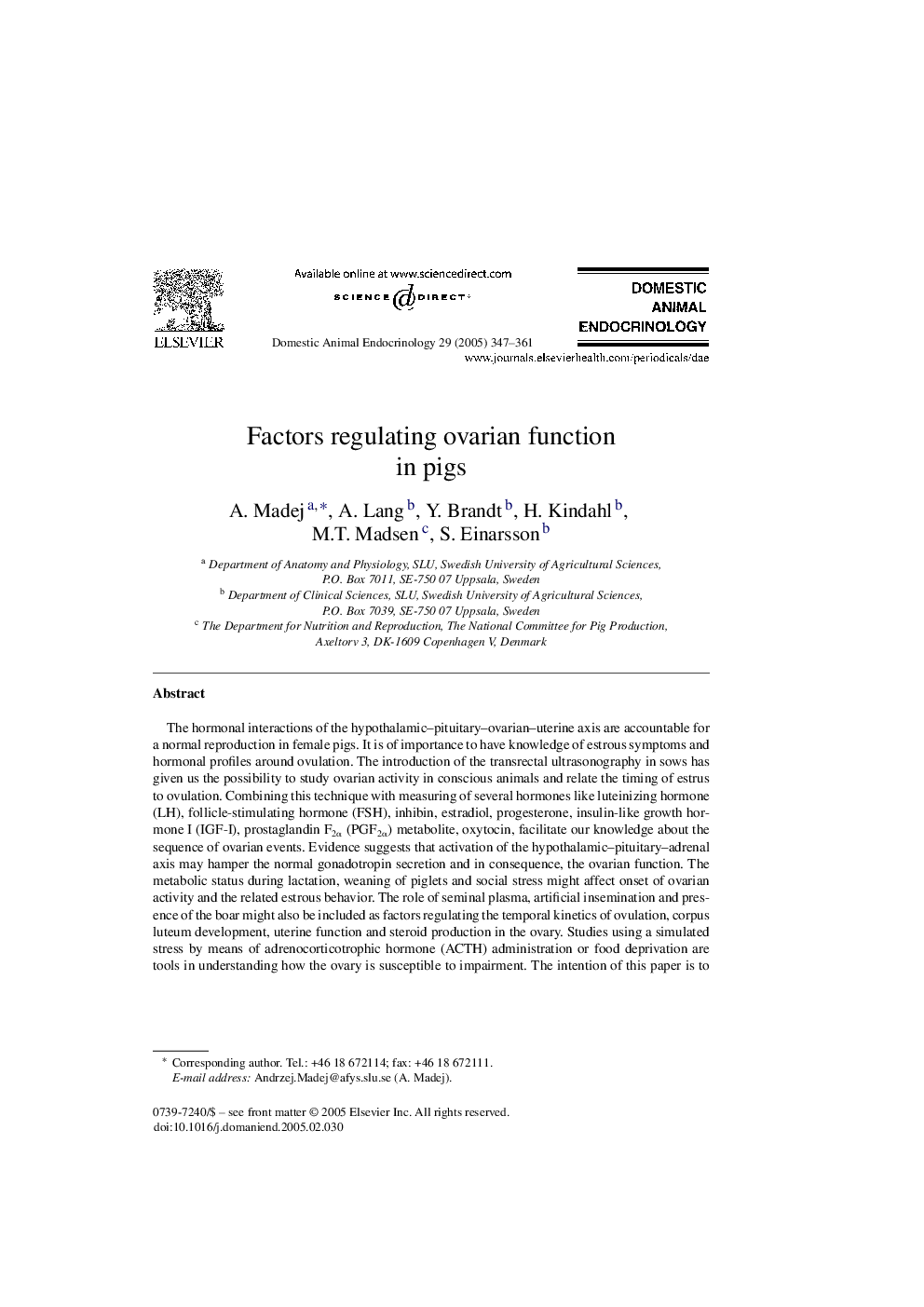| Article ID | Journal | Published Year | Pages | File Type |
|---|---|---|---|---|
| 8967174 | Domestic Animal Endocrinology | 2005 | 15 Pages |
Abstract
The hormonal interactions of the hypothalamic-pituitary-ovarian-uterine axis are accountable for a normal reproduction in female pigs. It is of importance to have knowledge of estrous symptoms and hormonal profiles around ovulation. The introduction of the transrectal ultrasonography in sows has given us the possibility to study ovarian activity in conscious animals and relate the timing of estrus to ovulation. Combining this technique with measuring of several hormones like luteinizing hormone (LH), follicle-stimulating hormone (FSH), inhibin, estradiol, progesterone, insulin-like growth hormone I (IGF-I), prostaglandin F2α (PGF2α) metabolite, oxytocin, facilitate our knowledge about the sequence of ovarian events. Evidence suggests that activation of the hypothalamic-pituitary-adrenal axis may hamper the normal gonadotropin secretion and in consequence, the ovarian function. The metabolic status during lactation, weaning of piglets and social stress might affect onset of ovarian activity and the related estrous behavior. The role of seminal plasma, artificial insemination and presence of the boar might also be included as factors regulating the temporal kinetics of ovulation, corpus luteum development, uterine function and steroid production in the ovary. Studies using a simulated stress by means of adrenocorticotrophic hormone (ACTH) administration or food deprivation are tools in understanding how the ovary is susceptible to impairment. The intention of this paper is to review current knowledge concerning the endocrine aspects of normal and stress-influenced ovarian function in pigs.
Related Topics
Life Sciences
Agricultural and Biological Sciences
Animal Science and Zoology
Authors
A. Madej, A. Lang, Y. Brandt, H. Kindahl, M.T. Madsen, S. Einarsson,
